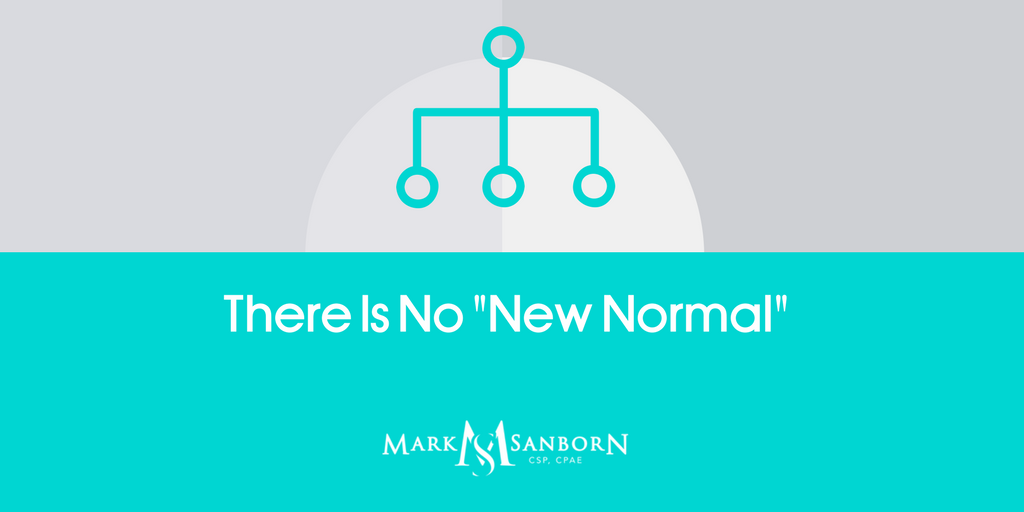Communicators are always looking for clever ways to explain things. In the age of hyperbole, straightforward explanations are rarely enough. To get noticed ideas need to be clever and catchy.
I know this because communicating in spoken and written word is what I do for a living.
A friend recently sent me a description of a speech entitled, “The New Normal.” I’d seen that phrase before. Heck, I’ve used the phrase before.
My friend thought this title (and he didn’t know the presenter or content of the presentation) would be of great interest to leaders. I agree: we’d all like someone to explain what normal means these days. We want to believe there actually is an identifiable normal.
The problem is that there is no new normal. Normal means standard, regular, or usual. I believe that business–and culture in general–is changing so quickly that we don’t reach a period of stasis that becomes regular or usual in the typical sense of the words. (And leaders grapple with the fact that their organizations do reach stasis and that prevents them from adapting to change.)
Some years ago David Reynolds wrote a book with a title that has always stuck in my mind. It is catchy, but I believe it more accurately explains business and life than “the new normal.” His book was “Playing Ball on Running Water.” This captures the incessant change we face each day. Of course Heraclitus said something similar much earlier when he told us nobody can step in the same river twice.
If I really wanted to torture words, I’d saw abnormal is the new normal. It is a nonsensical, yet I bet you understand what I mean.
This hope that we can identify normal is a subset of magic bullet thinking, the belief that something (or someone) can provide the ultimate answer, cure or solution. Life is much more complex and, in the end, success requires doing the necessary work. There is no magic bullet nor is there a normal that a leader or anyone else can wrap his or her arms around. And, as I write about in Up, Down or Sideways, there are things that we can and should do that will benefit us regardless of what does happen.
If you’re like me, you don’t really like uncertainty. I’d like to know what is going to happen and what to do about it. I’ve made peace with the need to experiment, track results and use agility to adjust or abandon my approach as need. Agility and speed, as I’ve written before, are tools for dealing with a lack of normalcy.
“The New Normal” is appealing, but in my experience, it is a myth. On a few rare days there might be a “new temporarily normal,” but on most days I have to accept that I’m playing ball, doing business and living my life on running water.










HI Mark
Way back in 2005, I wrote and was speaking about the theme “Volatility is the New Normal.” I think I was sort of right on that theme!
http://www.jimcarroll.com/2005/12/volatility-is-the-new-normal/
jc
I’d agree, Jim…you were on to what was happening. Volatility keeps things from becoming settled or standardized or, well, “normal.” Thanks for weighing in.
I would like to agree to the statement that new normal is appealing but is a myth. There is no such a thing since right from the very start, a standard was already set. And to recall, two people failed to that standard.